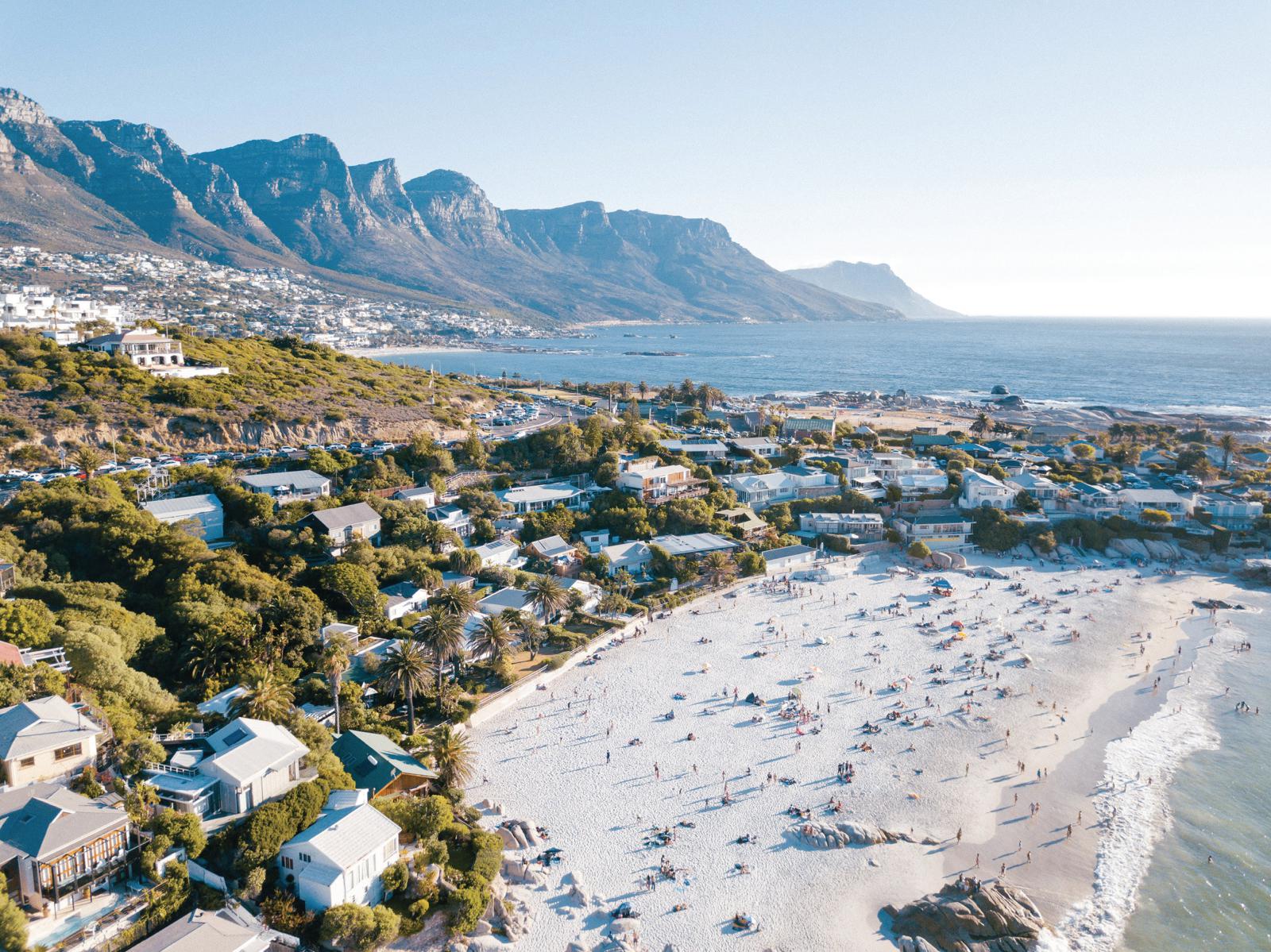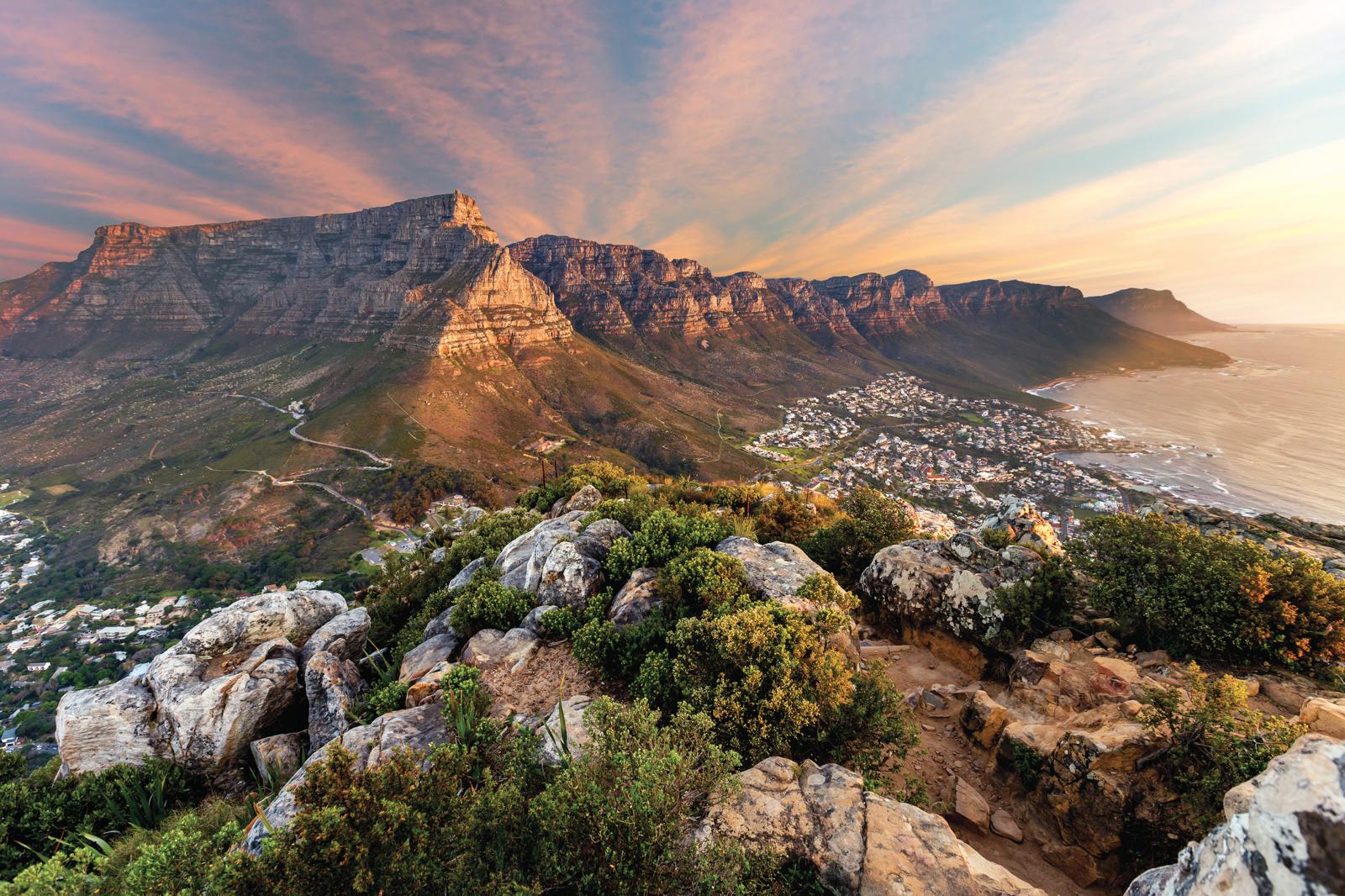

Extraordinary natural beauty and serious cultural cred lure travellers to Cape Town, along with a beautiful generosity of spirit, writes Kate Symons
“You come as a tourist, but leave as a local.” I must admit, when More Quarters’ Guest Relations Manager Justin Mpoyi made this bold suggestion as he pointed out key sites on my crisp city map, I let it pass as a bit of spin.
To be fair, Justin didn’t seem the type. His wide, genuine smile had greeted us as warmly as the lobby’s crackling fire and his descriptions of nearby hotspots were laced with pride. But we were spending just a few days in Cape Town. Leave as a local? I couldn’t imagine so.
Yet I was certainly open to the possibility. Cape Town is still basking in its rise as a world-class design hub and the city’s legendary natural beauty and flourishing dining scene ably support this reputation. So far, it’s ticking all the right boxes.
Much of the on-trend vibe can be attributed to the city’s 2014 post as World Design Capital, a title presented biennially by the International Council of Societies of Industrial Design.
Awarded to cities that recognise design as a tool for social, cultural and economic development, the designation resulted in hundreds of design projects in 2014 alone and the legacy is still very much evident today.
But let’s get one thing straight – Cape Town was appealing long before the design-savvy moved in. The provincial capital of South Africa’s Southwestern Cape, Cape Town is dramatically framed by imposing mountain ranges, rugged coastline and beautiful bays. Table Mountain is its star – standing strong and proud, like the locals we come to meet during our stay.
Formidable she may be, but the famous peak is shy at times, too, as we discover upon arrival in South Africa’s so-called “Mother City.” It’s a wet, grey day and Table Mountain and Lion’s Head are veiled in a thick and low-hanging fog that, according to the forecast, threatens to stick around for the duration of our visit. The shrouded icon still manages to impress and the promise of what lies beneath is palpable.
We don’t have to wait long as we’re blessed with a view of Table Mountain with our eggs the following morning. Located in the suburb of Gardens, just off eclectic Kloof Street in the heart of the City Bowl, More Quarters is a luxury boutique hotel with, as might be obvious, magnificent panoramas of Table Mountain from the picturesque dining room. Having already accepted the possibility of missing the show, this felt like an exclusive performance and I revelled in my front-row seat, rooibos tea in hand.
Thankfully, this blue-sky day coincided with our visit to Kirstenbosch National Botanical Garden, a lush 528-hectare estate nestled at the eastern foot of the majestic rock. The vantage points here are many, but it is the Tree Canopy Walkway, which snakes delicately through the treetops, that provides the winning view; an extraordinary vista that would almost certainly feature on the camera roll of every departing visitor.
For views of a different kind, a cable car will take you to the summit in about five minutes for 360-degree views of the city. The weather hijacks our plans on this occasion: the cable car is closed due to strong winds.
It’s hard to be mad at Mother Nature, though.
The rain is good news for the city’s drought, a reality locals believe has been sensationalised by global media and thereby affecting tourism. Water conservation is still a high priority and restrictions are in force. At More Quarters, rooms have signs kindly requesting guests avoid taking baths and reuse towels and linens. These and other obvious measures seem entirely reasonable and our health and hygiene are never compromised.
While the sky was mostly grey during my visit, Cape Town is bursting with energy and colour, endorsing South Africa’s moniker as the ‘Rainbow Nation.’ The V&A Waterfront – the city’s blue-riband precinct – is a hive of activity, packed with retail stores, restaurants, hotels and other star attractions.
The 123-hectare site has developed slowly but surely since work started in 1989 and its most recent addition – the Silo District – is arguably the most impressive. It’s my first port of call, thanks to the much-lauded reinvention of the historic grain silo.
An umbrella-less dash across the Marina Swing Bridge and I am standing – utterly awe-inspired – in the atrium of the landmark Zeitz Museum of Contemporary Art Africa (MOCAA). Here, British designer Thomas Heatherwick has performed architectural magic, slicing the 42 giant cylinders to create an extraordinary concrete honeycomb.
If you’re able to pull yourself away from the grand entrance, you’ll find 100 separate galleries showcasing a cutting-edge collection of modern African art. The Silo Hotel occupies the grain elevator portion of the building and its level 6 bar, The Willaston, is a plush spot for a cocktail and a gallery debrief.
It’s impossible to pretend, though, that this colourful city has outrun its painful past. Homelessness is a regular sight and impoverished townships are scattered throughout, often wedged between leafy suburbs. The contrast is a heavy weight to bear at times.
South Africa’s uncomfortable history, characterised by colonialism, slavery and racial segregation, is memorialised in a number of ways throughout Cape Town, and our travels include one particularly moving stop. The District Six Museum celebrates the once vibrant mixed-race suburb that was demolished during apartheid, its 60,000 residents forcibly removed.
En route, our Ilios Travel guide, Avril O’Connor, a born-and-bred Capetonian, pulls up beside the grand Castle of Good Hope and proudly recounts the day Nelson Mandela addressed the crowd from the adjacent City Hall, following his release from prison in 1990: “There was not even room [in the streets] for an ant. It felt like a new world. It was like doors opening everywhere for me.”
Avril was a resident of District Six. The daughter of a white father and black mother, her experience during apartheid was a harrowing one – she could not be seen in public with her father; her mother had to pretend to be the maid – yet she shares it with such grace. And, although she concedes there are “a lot of skeletons in the closet” she firmly believes in her city and its future.
The following afternoon, Avril drives us beyond Cape Town’s borders and on to our next destination, and the mood in our vehicle shifts. As the light fades, and the soft orange streetlights begin to glitter, I realise I am not looking forward to saying goodbye. To Cape Town, of course, although I feel confident I’ll return. More so, I am not looking forward to saying goodbye to Avril.
On reflection, it occurs to me that – contrary to Justin’s words – I don’t leave Cape Town as a local. Our stay was too short and the city too complex for me to assume such a label. But those we encountered, headed by the generosity and spirit of the proud woman who led the way, certainly made me feel like a friend. And if you ask me, that’s even better.

Latest Articles
Don't miss the latest from Luxury Travel
